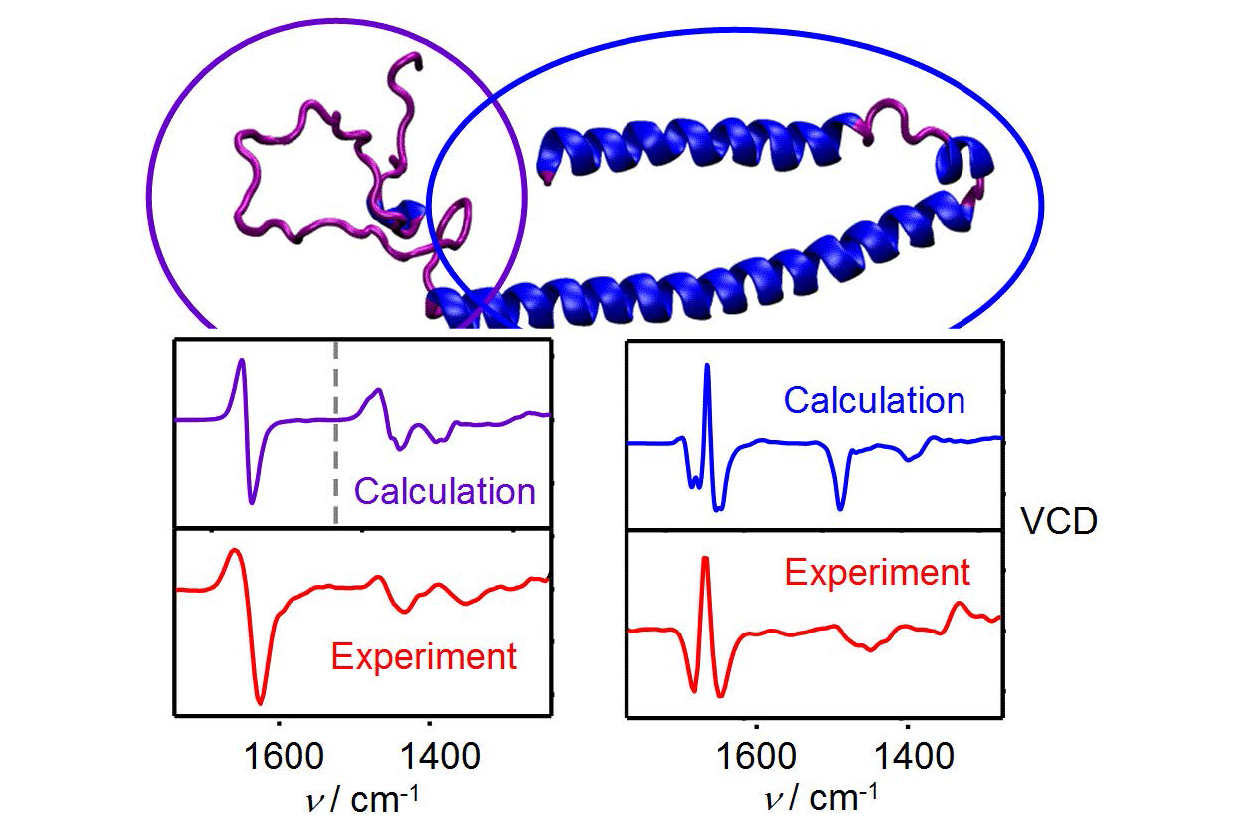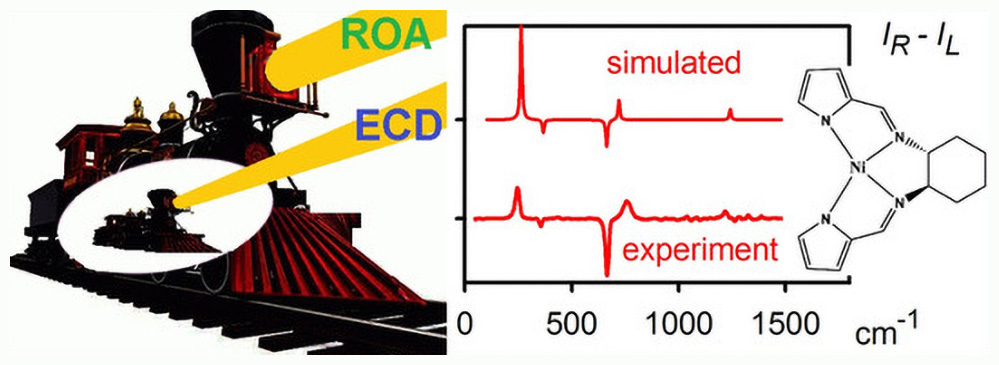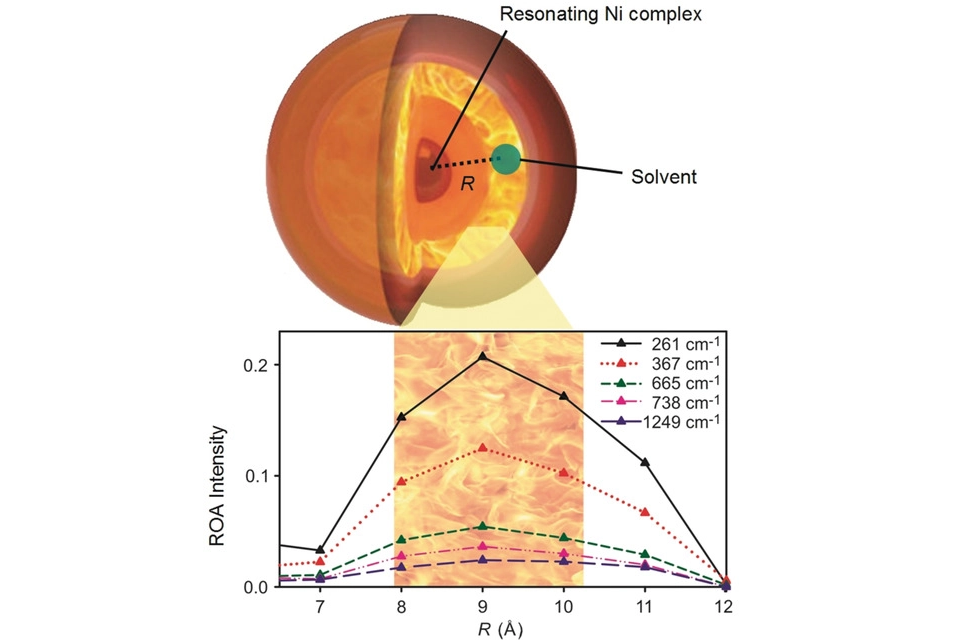
Parkinson's disease (PD) is closely related to α-synuclein, which is a neuronal protein adopting multiple conformations. Nerve cells affected by PD develop Lewy bodies, aggregates mostly formed by an insoluble β-sheet-based α-synuclein form, but the exact mechanism of this process is unknown. Conformational studies of α-synuclein outside the human body can help us to understand it.
The scientists from the research group of Petr Bouř from IOCB Prague together with the colleagues from UCT Prague and Palacký University Olomouc studied various α-synuclein forms by the vibrational circular dichroism and Raman optical activity (ROA) spectroscopies. They used the Cartesian tensor transfer technique developed by them to simulate and predict the experimental spectra. For the first time, they also observed a strong low-frequency (∼50–200 cm−1) ROA signal and related it to the protein structure.
The results from combining the chiroptical spectroscopy with spectral simulations to study the protein and peptide folding have been published in Physical Chemistry Chemical Physics with Andrii Kurochka as the first author. The publication has been selected as a 2021 HOT PCCP article and is free to access until the end of October 2021.
The original paper:
- Kurochka, A.; Průša, J.; Kessler, J.; Kapitán, J.; Bouř, P. α-Synuclein conformations followed by vibrational optical activity. Simulation and understanding of the spectra. Physical Chemistry Chemical Physics 2021, 23, 16635-16645. https://doi.org/10.1039/D1CP02574K





